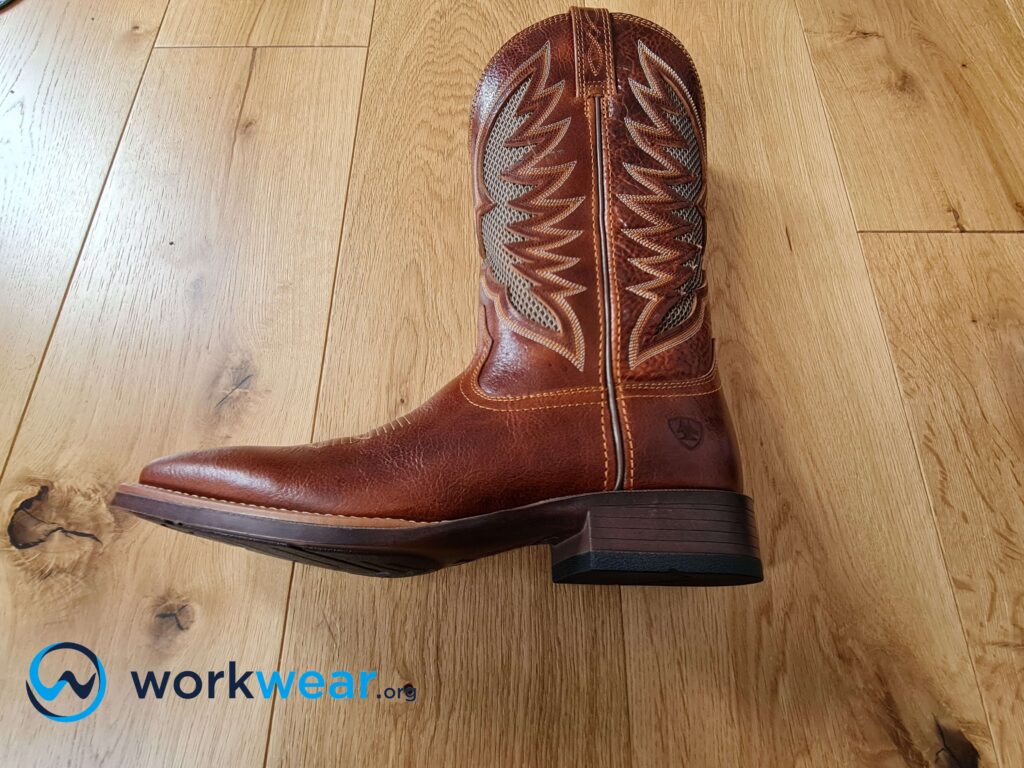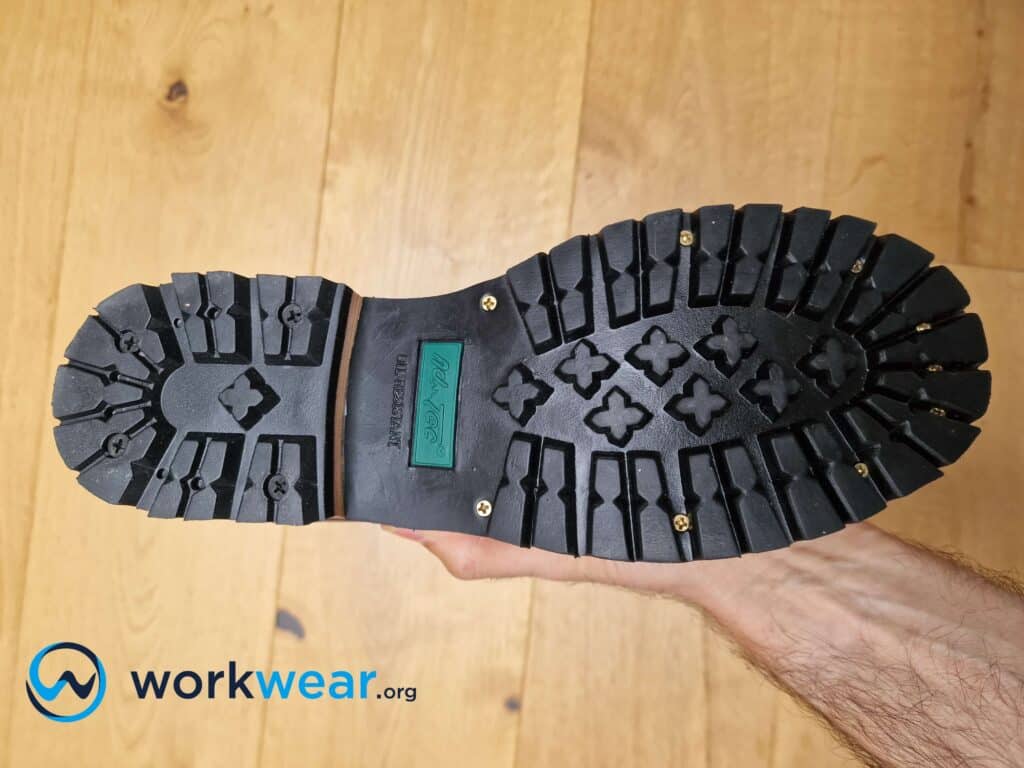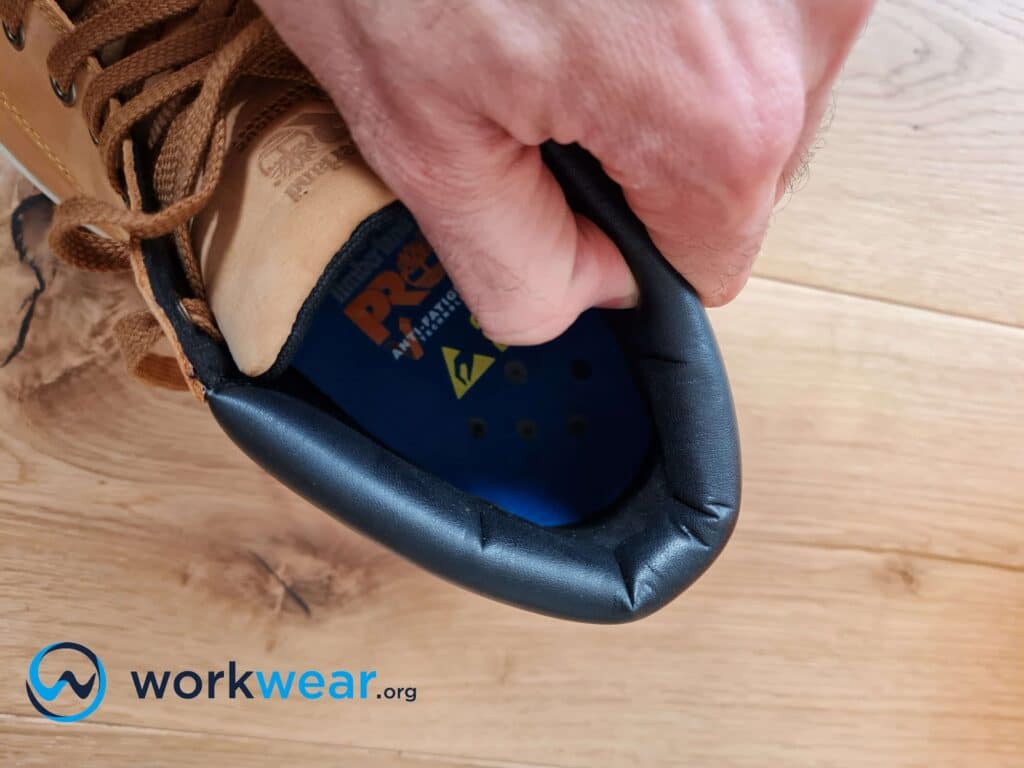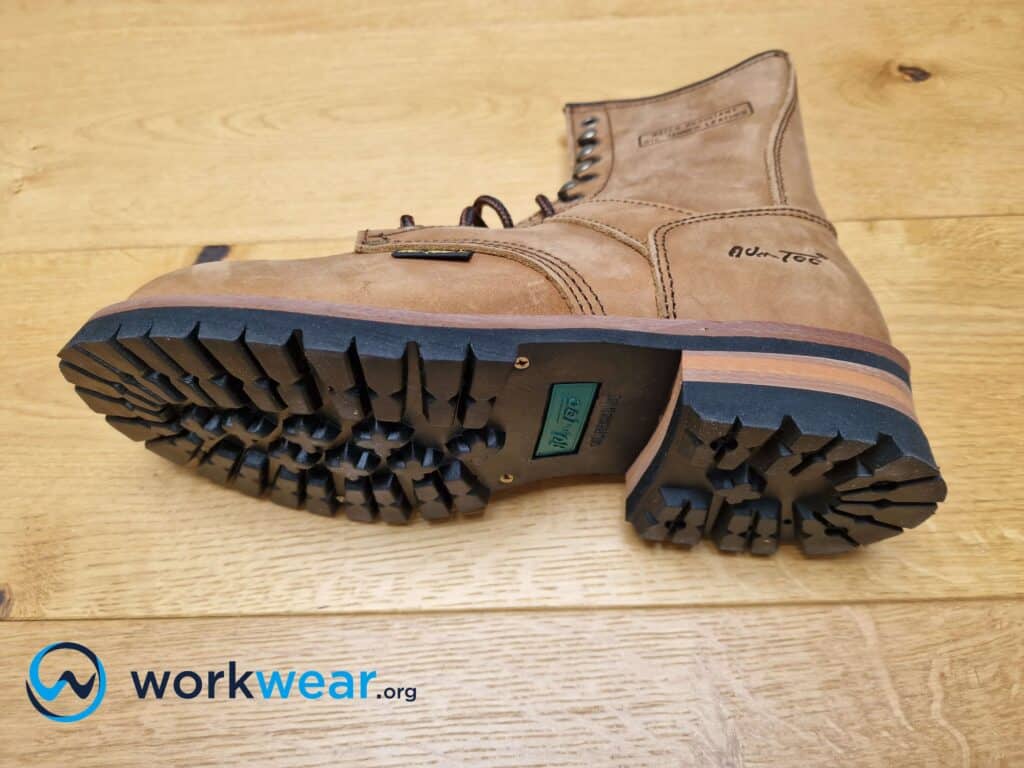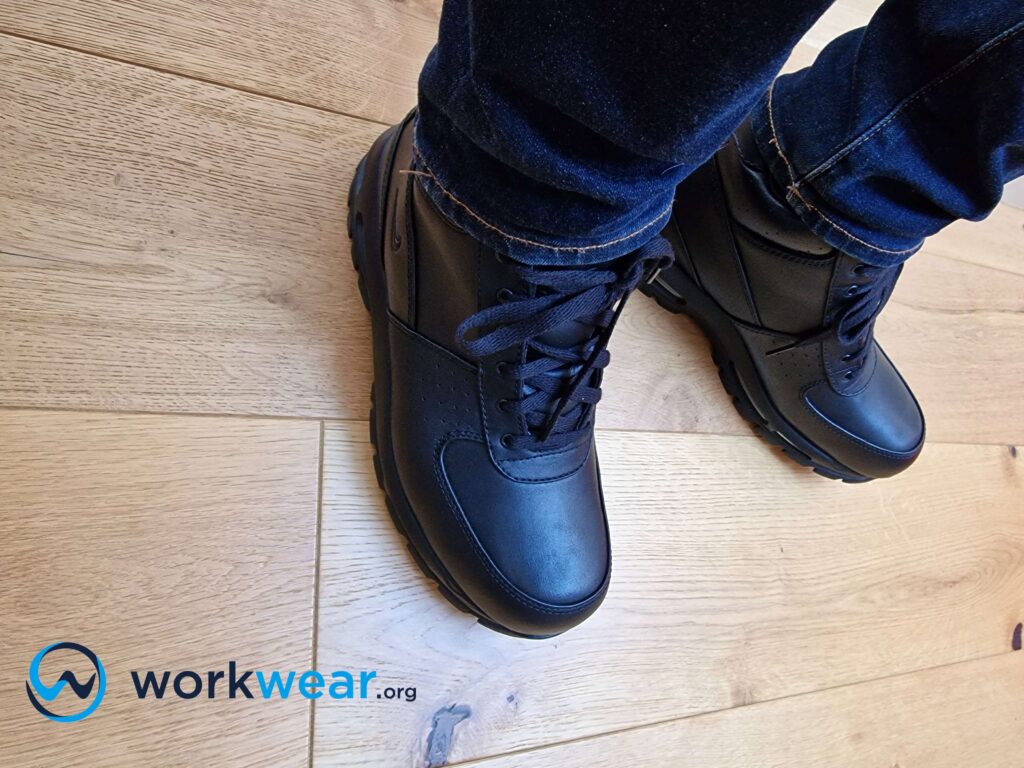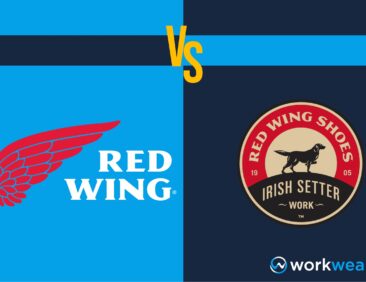Low Top vs High Top Work Boots – Making the right choice

Having a hard time choosing between low-top and high-top work boots? We’re here to help you make the best decision by sharing our experiences on this topic. We’ve tested outstanding products for both styles, trying them out in various work settings to determine their performance. Check out what we discovered about these styles – what sets them apart and the similarities that make them suitable for different work scenarios.
Main Similarities
Quality
Several factors, including materials and construction methods, determine the overall quality of work boots. In this aspect, low-top and high-top work boots have the same quality levels, which depend on how they’re made. These boots use materials such as high-quality leather for uppers that look versatile enough for use in different work conditions. These boots’ quality is reflected in their looks and their levels of comfort, support, safety, and strength.
Winner: Low-top and high-top designs showcase reliable quality regarding work boots. The quality depends on how the boots are built – their construction methods and materials for the uppers and soles.
Durability
Durability is significantly affected by the quality of materials used rather than the height of the footwear. High-top and low-top work boots of high quality are built with sturdy materials to withstand different work conditions. Thick, high-quality leather uppers maintain strength over longer than inferior materials. On the other hand, some work boots use abrasive-resistant materials for the entire upper or as reinforcements on high-wear areas. These non-leather materials improve the boots’ strength and durability for long-term use by resisting signs of damage, such as scuffs or scratches.
Winner: Low-top and high-top work boots come out on top regarding durability. It’s worth noting that durability is directly affected by the materials used, so these should also be considered.
Comfort
Regardless of their heights, both low-top and high-top work boots can be designed to provide all-day foot comfort. Low top styles commonly feel less bulky than their higher counterparts, so they’re less likely to drag on the feet with too much weight. Meanwhile, both high-top and low-cut designs can be equipped with cushy interiors to soften the blow of nonstop walking on hard surfaces. Other comfort enhancements include shock-absorbent heels, moisture-wicking linings, and padded collars.
Winner: Work boots with either low- or high– top designs can excel with comfortable features. Their comfort levels depend on the materials used and how they’re built using comfort-enhancing components.
Safety Features
High-quality work boots, whether they’re low-top or high-top, can protect the feet against safety hazards. Special features can be incorporated, enabling the boots to protect the feet from serious harm. Some enhancements that can be built into low-top or high-top work boots are safety toe caps, metatarsal guards, and puncture-resistant soles. The components generally build a barrier over the feet, blocking safety threats encountered in harsh work conditions.
Winner: Low-top and high-top work boots win in this aspect, as both styles can be designed with safety features. These enhancements protect the feet by shielding them from different safety hazards in the work environment.
Main Differences
Style
Low-top work boots typically have more streamlined designs than higher-cut boots. Some have athletic profiles that can easily be mistaken for basketball shoes or casual sneakers. Others have all-leather styles that are suitable for different work environments, both indoor and outdoor. Work boots with low-top styles look less industrial than taller designs, so they’re generally more versatile. Most of these designs can be used straight from work to more social settings and for other leisure activities.
On the other hand, high-top work boots tend to have more heavy-duty profiles. Their bold looks make them ideal for challenging environments that require equally tough footwear. However, their industrial designs often need to be more suitable indoors or in formal settings.
Winner: Low-top work boots win in the style department compared to their bulkier high-top versions. Their typically streamlined designs pair well with workwear and more casual attire.
Coverage
High-top work boots with an average height of 6 to 8 inches (or more) provide more coverage than low-top ones. Their tall heights cover the feet and most of the lower leg, protecting these parts against abrasion and other hazards in the work environment. On the other hand, low-top work boots with an average height of 4 to 6 inches also provide good coverage but less than the taller versions. The extended coverage from high-top work boots also offers better protection against wetness. This is especially helpful when wading in puddles or muddy ground since the wet elements won’t easily slip into the boot due to the high shaft height.
Winner: High-top work boots outshine low-top versions when it comes to coverage. They cover the feet and more areas of the lower leg, delivering better protection against abrasion, wetness, and different hazards in the work area.
Ankle Support
In general, work boots with tall shafts support the ankle better than those with lower cuts. High-top work boots typically hold the ankles more securely, preventing them from twisting by accident. The enhanced ankle support is crucial for preventing ankle injuries while walking in unstable ground conditions. Low-top work boots also offer good ankle support, especially if they have padded collars or other supportive features to hold the ankles in their proper positions. It’s worth noting that ankle support isn’t just determined by boot height. In some cases, low-top work boots with thickly cushioned collars or special support systems can offer stronger ankle support than tall boots without any component to hold the ankle in place.
Winner: High-top work boots generally stand out with better ankle support. They can secure the ankles more efficiently than lower-top work boots.
Weight
Low-top work boots typically weigh less than high-top ones. The weight difference between the two work boot heights affects foot comfort and mobility. Low-top work boots with more lightweight, streamlined designs are more comfortable to use over long periods. This is because they don’t weigh the feet like high-top boots with bulky profiles do. They also let the feet move more naturally for better mobility on the job. Of course, other aspects – such as materials and hardware features – also contribute to the boots’ total weight.
Winner: Low-top work boots win over high-top versions regarding weight. They are more lightweight, making walking much easier and comfier to manage even after long periods.
Breathability
Low-top work boots can allow more air to enter than boots with extended heights. They can feel cool for much longer as the air circulates more freely. On the other hand, it can be harder for the air to enter high-top work boots. This style is more prone to overheat quickly, especially in humid or hot surroundings. Low-top work boots allow the feet to breathe and feel cool for hours, promoting better comfort by preventing too much sweat and heat buildup.
Winner: Low-top work boots have more breathable designs than high-top ones. They welcome more air, making the interiors feel cool and dry for longer.
Who’s the Overall Winner?
In this comparison, low-top work boots have an edge over high-top work boots – although both styles are winners in their own ways. Low-top work boots stand out for comfort and ease of motion since they’re typically more lightweight and let more air in. Their styles are also more versatile and can be used in more settings. On the other hand, high-top work boots outshine their low-cut counterparts when it comes to coverage and ankle support, making them more suitable for demanding jobs and environments.
Recap
Choose low-top work boots if you:
- Prefer more lightweight work boots
- Want work boots that won’t overheat the feet
- Like versatile work boots that can be used off-the-clock
Pick high-top work boots for:
- Working on tricky surfaces
- Stronger ankle support
- Better coverage against hazards in work surroundings
Recommended Low-Top work Boots
- Nike Air Max Goadome Boot
- Converse GORE-TEX Chuck Taylor All-Star Boot
- Timberland Disruptor Alloy Toe Boot
Recommended High Top Work Boots
Personal Testing Experience
I observed while testing two high-quality work boots with low-top and high-top versions. The Nike Air Max Goadome Boot had a waterproof structure that sealed out liquids, maintaining a comfortable, dry feeling while we worked in wet conditions. It looked equally bold and sleek, making it a versatile choice that we could maximize at work and in more social settings. The interior was thickly padded, supporting the foot with a comforting softness all day. However, the laces were thin and didn’t hold up well after a short period of use.
Meanwhile, the high-top AdTec 9-inch Crazy Horse Leather Work Boot showcased a premium design that was tough enough to withstand demanding work environments. It maintained its sturdy build over a long time, with premium materials that didn’t easily show signs of damage. The sole had an outstanding grip, with large lugs that dug deeply into the ground for superior stability even over slippery or sloped terrains. Some screws kept the sole in place and allowed it to be replaced if necessary to prolong the boot’s life. Surprisingly, this boot didn’t weigh as much as it looked, but it would’ve been even more impressive if it had safety toes.
Conclusion
Height isn’t the only aspect that needs to be considered in work boots, but it’s still important. Low-top and high-top work boots have their benefits and drawbacks for certain needs. The low-top options are typically more versatile, weigh less, and stay cool longer – making them more comfortable for all-day use. On the other hand, high-top work boots provide stronger ankle support and coverage that can protect the feet against some hazards in the workplace.
FAQ's
- Can low-top work boots protect the feet in hazardous settings?
- Yes, the required safety features – such as electrical hazard protection or safety toe caps – can keep the feet safe in hazardous work environments.
- Do all high-top work boots have lace-up designs?
- No, some of them have pull-on designs. Western boot styles don’t have lacing systems and must be pulled on instead.
- Are low-top work boots suitable for wet conditions?
- If they have waterproof materials, yes. Otherwise, they’re unsuitable for wet conditions where the boots can easily absorb liquids and get in quickly from the top.
- Do all high-top work boots overheat quickly?
- No, some high-top work boots can keep the feet cool for a long time. An example is some Ariat Western work boots – including the VentTEK Ultra and Hybrid VentTEK – equipped with mesh panels for good air circulation.
